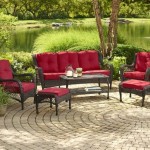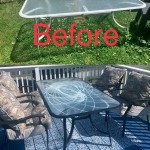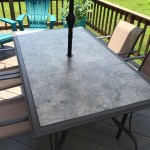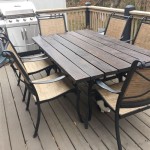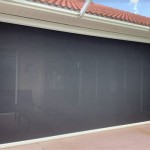Screen Rooms for Patios: Enhancing Outdoor Living
Screen rooms offer a compelling solution for homeowners seeking to maximize the usability and enjoyment of their patios. By transforming an open space into a protected enclosure, screen rooms mitigate the nuisance of insects, provide shade from harsh sunlight, and offer a measure of protection from light rain. This article explores the benefits, design considerations, materials, installation aspects, and maintenance requirements associated with screen rooms for patios, providing a comprehensive understanding of this popular home improvement option.
Benefits of Enclosing a Patio with a Screen Room
The decision to install a screen room on a patio is often driven by a desire to enhance the outdoor living experience. The advantages extend beyond simple comfort, encompassing improved functionality and increased property value.
One primary benefit is insect control. Mosquitoes, flies, and other pests can render a patio unusable, particularly during warmer months. A well-constructed screen room effectively excludes these insects, allowing residents to enjoy their outdoor space without the constant annoyance and potential health risks associated with insect bites. This is especially valuable in regions with high mosquito populations or a prevalence of insect-borne diseases.
Protection from the elements is another significant advantage. While a screen room does not provide complete shelter from severe weather, it offers substantial protection from direct sunlight. The shade provided by the screen reduces the intensity of the sun's rays, making the patio more comfortable during hot days and mitigating the risk of sunburn. Furthermore, a screen room can offer some protection from light rain and falling debris, such as leaves and twigs, preventing furniture from becoming wet or soiled.
Increased privacy is also a notable benefit. A screen room creates a more secluded environment, shielding the patio from the direct view of neighbors or passersby. This enhanced privacy allows homeowners to relax and entertain guests without feeling exposed, creating a more intimate and comfortable outdoor space.
Finally, a well-designed and constructed screen room can add to the aesthetic appeal and overall value of a home. It can transform an otherwise underutilized patio into a functional and attractive living space, potentially increasing the property's resale value. The perceived value is amplified if the screen room integrates seamlessly with the existing architectural style of the house.
Design and Structural Considerations
Designing a screen room requires careful consideration of various factors, including the size and shape of the patio, the desired aesthetic, and local building codes. A well-designed screen room will not only be functional and comfortable but also visually appealing and structurally sound.
The size and shape of the patio will dictate the dimensions of the screen room. The design should maximize the available space while ensuring adequate ventilation and ease of movement. Consideration should be given to the placement of furniture and the intended use of the space. If the patio is irregularly shaped, a custom design may be necessary to ensure a proper fit.
The architectural style of the house should also influence the design of the screen room. The goal is to create a seamless transition between the indoor and outdoor spaces. This can be achieved by matching the roofline, siding, and trim of the house. The choice of screen material and framing should also complement the existing architectural style.
Local building codes and regulations must be taken into account during the design process. These codes may dictate specific requirements for structural integrity, ventilation, and fire safety. Obtaining the necessary permits before beginning construction is crucial to avoid potential fines or delays.
Ventilation is a critical factor in screen room design. Adequate airflow is necessary to prevent the space from becoming stuffy and uncomfortable. This can be achieved through the use of large screen panels, strategically placed vents, or ceiling fans. The orientation of the screen room in relation to prevailing winds should also be considered to maximize natural ventilation.
The structural integrity of the screen room is paramount. The framing must be strong enough to withstand wind loads and other environmental stresses. The choice of materials and construction techniques will depend on local climate conditions and building codes. A professional contractor can ensure that the screen room is built to meet all applicable standards.
Materials and Installation Process
The choice of materials for a screen room significantly impacts its durability, aesthetics, and cost. Selecting the appropriate materials for framing, screening, and roofing is crucial for ensuring a long-lasting and attractive structure. The installation process also requires careful planning and execution to ensure a secure and weather-resistant enclosure.
Framing materials commonly used for screen rooms include wood, aluminum, and vinyl. Wood offers a natural aesthetic and can be easily customized to match the existing architecture of the house. However, wood is susceptible to rot and insect damage and requires regular maintenance. Aluminum is a durable and low-maintenance option that is resistant to rust and corrosion. Vinyl is another low-maintenance option that is available in a variety of colors and styles. The choice of framing material will depend on budget, aesthetic preferences, and local climate conditions.
Screening materials vary in terms of mesh size, durability, and visibility. Fiberglass screening is a common and affordable option that provides good insect protection. Aluminum screening is more durable than fiberglass and offers better visibility. Pet-resistant screening is designed to withstand scratches and tears from pets, making it a good choice for households with animals. The choice of screening material will depend on the desired level of insect protection, durability, and visibility.
The roofing material for a screen room should be durable, weather-resistant, and aesthetically pleasing. Common options include aluminum, polycarbonate, and shingles. Aluminum roofing is lightweight, durable, and requires minimal maintenance. Polycarbonate roofing is translucent, allowing natural light to filter through while providing protection from the elements. Shingles can be used to match the existing roof of the house, creating a seamless transition between the indoor and outdoor spaces. The choice of roofing material will depend on budget, aesthetic preferences, and local climate conditions.
The installation process for a screen room typically involves several steps, including site preparation, framing construction, screen installation, and roofing. Site preparation includes clearing the patio area and ensuring that the foundation is level. The framing is then constructed according to the design specifications. The screen is attached to the framing using staples, screws, or specialized fasteners. Finally, the roofing is installed to provide protection from the elements.
Proper installation is crucial for ensuring the structural integrity and weather resistance of the screen room. It is highly recommended to hire a professional contractor with experience in screen room construction. A professional contractor will have the necessary tools and expertise to ensure that the screen room is built to meet all applicable building codes and standards.
Maintenance and Longevity
Proper maintenance is essential for extending the lifespan of a screen room and preserving its aesthetic appeal. Regular cleaning, inspection, and repairs can prevent minor issues from escalating into more significant problems. A well-maintained screen room will provide years of enjoyment and enhance the value of the property.
Regular cleaning is crucial for removing dirt, debris, and mildew from the screen and framing. The screen can be cleaned with a soft brush and mild detergent. The framing can be cleaned with a damp cloth and a general-purpose cleaner. Avoid using harsh chemicals or abrasive cleaners, as these can damage the materials. Pressure washing should be avoided, as it can damage the screen and framing.
Regular inspection is essential for identifying potential problems early on. Inspect the screen for tears or holes and repair them promptly. Check the framing for signs of rot, corrosion, or damage. Ensure that the roofing is secure and free from leaks. Addressing minor issues promptly can prevent them from escalating into more significant and costly problems.
Repairs should be performed as needed to maintain the structural integrity and weather resistance of the screen room. Small tears in the screen can be repaired with a patch kit. Damaged framing can be repaired or replaced. Leaks in the roofing should be addressed promptly to prevent water damage. Hiring a professional contractor for repairs can ensure that the work is done correctly and meets all applicable building codes.
Protecting the screen room from extreme weather conditions can also prolong its lifespan. During severe storms, it is advisable to remove or secure any loose objects that could be blown against the screen or framing. If the screen room is located in an area with heavy snowfall, it is important to remove the snow from the roof to prevent structural damage.
By following these maintenance guidelines, homeowners can ensure that their screen room remains a comfortable, attractive, and valuable addition to their property for many years to come.

Screen Room Screened In Porch Designs S Patio Enclosures

Screen Room Screened In Porch Designs S Patio Enclosures

Hard Top Screen Room Insulated Roof Patio Enclosure Engineered Panels

What Is A Screen Room

Screen Room Screened In Porch Designs S Patio Enclosures

Diffe Types Of Patio Screens For Your Screen Room

Screen Room Screened In Porch Designs S Patio Enclosures

Screen Room Screened In Porches Ideas Costs

Screen Rooms Room Patio Cover Covers From Betterliving

Screen Enclosures Texan Glass Solar Control
Related Posts

